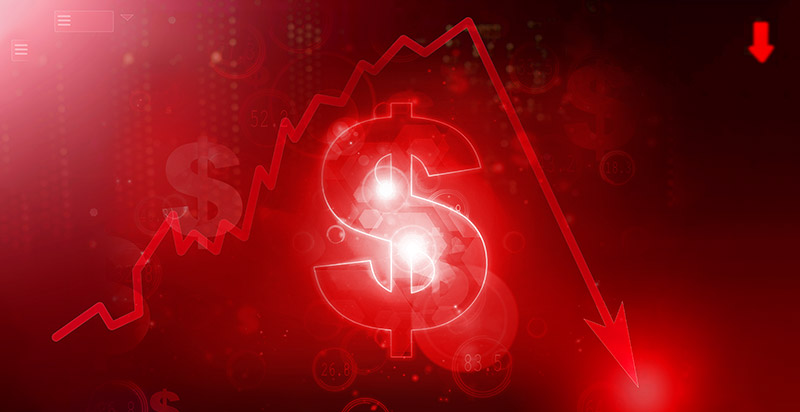What to Look Out for in the Forex Market in February

With the first month of 2018 now behind us, it is time to get an overview of where the forex market stands at the moment, and what we can expect to play out in the time ahead. January has been highlighted by a surprising weakness in the US dollar, despite new all-time highs in the US stock market. Meanwhile, we have witnessed gold come back to highs not seen since the turn-around in the gold market in 2016.
The question now is how we as forex traders should play this in the month ahead.
US dollar weakness to continue?
As US Treasury Secretary Steve Mnuchin has stated, and Trump also reiterated, they both prefer a lower US dollar. Trump, however, later changed his mind and was quoted as saying that “ultimately, I want to see a strong dollar.” It may be confusing to figure out what this really means, but there is little doubt that Trump’s policy of bringing manufacturing jobs back to the US would benefit a lot from a weaker dollar.
The chart above shows the US dollar Index (DXY), which is a measure of the US dollar’s performance compared to a basket of other major currencies. As evident from the chart, the trend has been bearish for the entire past year, with the sell-off accelerating in 2018. The question now is if we are starting to see a bottom for the greenback.
Possible reversal in USD/AUD
The US dollar/Australian dollar trading pair has already shown signs of a reversal on the daily timeframe, with five consecutive days of higher prices. In other words, the US dollar is doing much better when compared to the Aussie dollar than it is relative to other currencies.
If the price of USD/AUD can continue to rise and we see a strong close above the 20 day moving average line, it can be considered as confirmation that we have already seen a bottom in this market. The first few days of February will be crucial to see how this plays out.
Gold prices
As is usually the case when the US dollar weakens, the gold price goes up as measured in the same currency. Similar to what we saw back in May and June last year, the gold chart looks a bit “top heavy” at the moment, with a potential double-top formation visible on the daily timeframe chart.
If the price of gold can break out from the red resistance area in a strong way, we may have even bigger gains ahead of us. Until that happens, it’s better to be careful. A strong reaction down below the blue 20 day moving average line may even provide an opportunity to short this market!
Fundamentally though, the case for gold seems to be getting stronger. We have seen gold increase despite all-time highs and record-low volatility in the US stock market. Imagine then how gold would react if we were to see a stock market crash, which is something many now are expecting to happen.
Combined with US dollar weakness, we are likely to see capital flows into safe haven assets like gold, silver, and even currencies like the Swiss franc.
Economic news
In terms of economic data releases, the first week of February offers a few important events to keep an eye on.
Firstly, the always crucial US ISM non-manufacturing PMI number is expected to be released on Monday February 5. A reading higher than the forecast would be considered good for the US dollar and we can expect to see it finally rise again. However, the readings have come in below the forecast for the past two months, contributing to the steady decline of the US dollar that we have seen.
Also on February 5, the Reserve Bank of Australia is set to come out with its interest rate statement. This is an important trigger for the Australian dollar and can lead to big fluctuations, meaning everyone trading the Aussie dollar should be aware of this. If your trading style relies solely on technical analysis, it may be wise to stay away from any forex pairs involving the Australian dollar during this announcement.
On February 7, the Reserve Bank of New Zealand is set to release its interest rate statement for New Zealand. This is among the most important events for the “Kiwi” dollar and can lead to sharp reactions in any related forex pair. Again, traders who rely on technical analysis should stay away from the kiwi in the time leading up to, and immediately after, the announcement.
Final words
With the “crypto craze” fading as prices decline, we may finally get focus back on real-world economic data and the forex market. Never forget that one of the reasons why forex is so fascinating is because it factors in absolutely everything that happens in the real world we live in, 24 hours a day.
One of the most interesting things to watch in the time ahead will be if the US stock market continues to rise, and how the US dollar responds. Will we see a reversal to a stronger dollar, or will it continue even lower? February will be a crucial month in this regard.









































